 W
WThe culture of Canada embodies the artistic, culinary, literary, humour, musical, political and social elements that are representative of Canada and Canadians. Throughout Canada's history, its culture has been influenced by European culture and traditions, mostly by the British and French, and by its own indigenous cultures. Over time, elements of the cultures of Canada's immigrant populations have become incorporated to form a Canadian cultural mosaic. Certain segments of Canada’s population have, to varying extents, also been influenced by American culture due to shared language, significant media penetration and geographic proximity.
 W
WA ranch is an area of land, including various structures, given primarily to the practice of ranching, the practice of raising grazing livestock such as cattle and sheep most often applies to livestock-raising operations in Mexico, the Western United States and Western Canada, though there are ranches in other areas. People who own or operate a ranch are called ranchers, cattlemen, or stockgrowers. Ranching is also a method used to raise less common livestock such as horses, elk, American bison or even ostrich, emu, and alpaca.
 W
WAnglo-America most often refers to a region in the Americas in which English is a main language and British culture and the British Empire have had significant historical, ethnic, linguistic and cultural impact. Anglo-America is distinct from Latin America, a region of the Americas where Romance languages are prevalent.
 W
WA 19th century community of the Métis people of Canada, the Anglo-Métis, more commonly known as Countryborn, were children of fur traders; they typically had Scots, or English fathers and Aboriginal mothers. They were also known as "English halfbreeds." Some Anglo-Metis still identify by this name. Their first languages were generally those of their mothers: Cree, Saulteaux, Assiniboine, etc. and English. Some of their fathers spoke Gaelic or Scots, leading to the development of the creole language known as "Bungee". Some scholars have started spelling Métis as "Metis" to acknowledge the presence and contributions of the Anglo-Métis and the complex history of the Métis people overall.
 W
WThe Canada Pavilion is a Canadian-themed pavilion that is part of World Showcase within Epcot at Walt Disney World in Orlando, Florida, United States. Its location is next to the United Kingdom pavilion.
 W
WThe Canadian Centennial was a yearlong celebration held in 1967 to celebrate the 100th anniversary of the Canadian Confederation. Celebrations in Canada occurred throughout the year but culminated on Dominion Day, July 1, 1967. Commemorative coins different from typical issues with animals on each — the cent, for instance, had a dove on its reverse. Communities and organizations across Canada were encouraged to engage in Centennial projects to celebrate the anniversary. The projects ranged from special one-time events to local improvement projects, such as the construction of municipal arenas and parks. The Centennial Flame was also added to Parliament Hill. Children born in 1967 were declared Centennial babies.
 W
WCanadian heraldry is the cultural tradition and style of coats of arms and other heraldic achievements in both modern and historic Canada. It includes national, provincial, and civic arms, noble and personal arms, ecclesiastical heraldry, heraldic displays as corporate logos, and Canadian heraldic descriptions.
 W
WThe Canadian Heritage Information Network is a special operating agency within the federal Department of Canadian Heritage that provides a networked interface to Canada's heritage institutions. It is based in Gatineau, Quebec, and is administratively merged with the Canadian Conservation Institute (CCI), another special operating agency of Canadian Heritage.
 W
WCanadiana is a term used to describe things, ideas, or activities that concern or are distinctive of Canada, its people, and/or its culture, especially works of literature and other cultural products. It can also refer to the collection of such materials, such as in cultural fields like music or art.
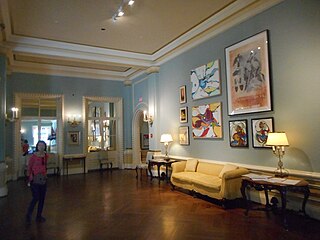 W
WThe Crown Collection is the assemblage of more than 7,000 objects, including contemporary and antique art and furnishings, books, rugs, and other objects owned by the sovereign in right of Canada, many of which are used to furnish the country's official residences.
 W
WA diner is a small restaurant found predominantly in the Northeastern, Southeastern, and Midwestern United States, as well as in other parts of the US, Canada, Serbia and parts of Western Europe. Diners offer a wide range of foods, mostly American cuisine, a casual atmosphere, and, characteristically, a combination of booths served by a waitstaff and a long sit-down counter with direct service, in the smallest simply by a cook. Many diners have extended hours, and some along highways and areas with significant shift work stay open for 24 hours.
 W
W"For the Fallen" is a poem written by Laurence Binyon. It was first published in The Times in September 1914.
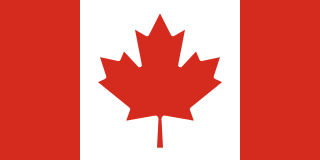 W
WThe Great Canadian Flag Debate was a national debate that took place in 1963 and 1964 when a new design for the national flag of Canada was chosen.
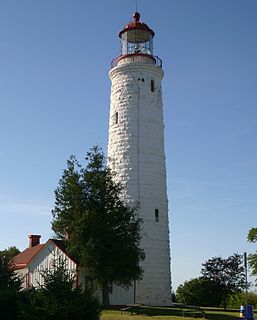 W
WThe Heritage Lighthouse Protection Act is an Act of the Parliament of Canada for the designation and preservation of historically significant Canadian lighthouses. It was passed by the Canadian Parliament in May 2008. The act set up a public nomination process and sets heritage building conservation standards for lighthouses which are officially designated. First introduced in 2000 as Bill S-21 in the Senate of Canada the bill enjoyed consistent multi-party support despite the unpredictable legislative agendas of minority Parliaments and was repeatedly re-introduced. The final vote of approval was made by the Canadian Senate in 2008 and the bill received Royal Assent on May 29, 2008.
 W
WIce hockey is a contact team sport played on ice, usually in an indoor or outdoor rink, in which two teams of skaters use their sticks to shoot a vulcanized rubber puck into their opponent's net to score goals. The sport is known to be fast-paced and physical, with teams usually fielding six players at a time: one goaltender to stop the puck from going into their own net, two defensemen, and three forwards who skate the span of the ice trying to control the puck and score goals against the opposing team.
 W
WIndigenous Canadians are the indigenous peoples within the boundaries of Canada. They comprise the First Nations, Inuit and Métis. Although "Indian" is a term still commonly used in legal documents, the descriptors "Indian" and "Eskimo" have fallen into disuse in Canada, and some consider them to be pejorative. "Aboriginal" as a collective noun is a specific term of art used in some legal documents, including the Constitution Act, 1982, though in some circles that word is also falling into disfavour.
 W
WInuit art refers to artwork produced by the Inuit, that is, the people of the Arctic previously known as Eskimos, a term that is now often considered offensive outside Alaska. Historically, their preferred medium was walrus ivory, but since the establishment of southern markets for Inuit art in 1945, prints and figurative works carved in relatively soft stone such as soapstone, serpentinite, or argillite have also become popular.
 W
WAn inuksuk or inukshuk is a manmade stone landmark or cairn built for use by the Inuit, Iñupiat, Kalaallit, Yupik, and other peoples of the Arctic region of North America. These structures are found in northern Canada, Greenland, and Alaska. This combined region, above the Arctic Circle, is dominated by the tundra biome and has areas with few natural landmarks.
 W
WA knit cap, originally of wool, is designed to provide warmth in cold weather. Typically, the knit cap is of simple, tapering constructions, though many variants exist.
 W
WLumberjacks are mostly North American workers in the logging industry who perform the initial harvesting and transport of trees for ultimate processing into forest products. The term usually refers to loggers in the era when trees were felled using hand tools and dragged by oxen to rivers. The work was difficult, dangerous, intermittent, low-paying, and involved living in primitive conditions. However, the men built a traditional culture that celebrated strength, masculinity, confrontation with danger, and resistance to modernization.
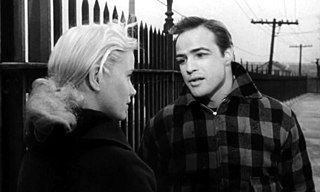 W
WMackinaw cloth is a heavy and dense water-repellent woolen cloth, similar to Melton cloth but using a tartan pattern, often "buffalo plaid". It was used to make a short coat of the same name, sometimes with a doubled shoulder. These jackets have their origins on the Canadian frontier and were later made famous by Canadian and American loggers in the upper Midwest as workwear during the mid-19th century logging boom.
 W
WThe minister of Canadian heritage is the minister of the Crown who heads Canadian Heritage, the department of the Government of Canada responsible for culture, media, sports, and the arts.
 W
WThe North American fur trade, an aspect of the international fur trade, was the acquisition, trade, exchange, and sale of animal furs in North America. Aboriginal peoples and Native Americans of various regions of the present-day countries of Canada and the United States traded among themselves in the pre–Columbian Era. Europeans participated in the trade from the time of their arrival to Turtle Island, commonly referenced as the New World, extending the trade's reach to Europe. The French started trading in the 16th century, the English established trading posts on Hudson Bay in present-day Canada during the 17th century, while the Dutch had traded by the same time in New Netherland. The North American fur trade reached its peak of economic importance in the 19th century and involved the development of elaborate trade-networks.
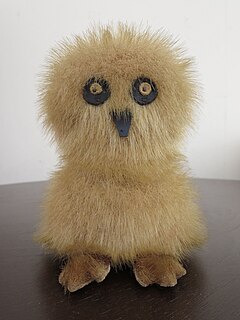 W
WAn Ookpik is a popular Inuit handicraft toy. It is a small, souvenir owl with large head and big eyes, a beak, and small black talons. They are often made from wolf fur, sealskin and other traditional materials.
 W
WAn open house is an event held at an institution where its doors are open to the general public to allow people to look around the institution and learn about it. These are often held at schools and universities to attract prospective students, familiarize them with the facilities, allow new students to become familiar with facilities and meet others, or to open informal communication channels between school staff and the students and their parents.
 W
WA promenade dance, commonly called a prom, is a dance party for high school students. It may be offered in semi-formal black tie or informal suit for boys, and dresses for girls. This event is typically held near the end of the school year. There may be individual junior and senior proms or they may be combined.
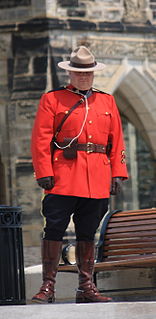 W
WThe Red Serge refers to the jacket of the dress uniform of the Royal Canadian Mounted Police. It consists of a scarlet British-style military pattern tunic, complete with a high-neck collar and blue breeches with yellow stripe identifying a cavalry history.
 W
WThe Roaring Twenties refers to the decade of the 1920s in Western society and Western culture. It was a period of economic prosperity with a distinctive cultural edge in the United States and Europe, particularly in major cities such as Berlin, Chicago, London, Los Angeles, New York City, Paris, and Sydney. In France, the decade was known as the "années folles", emphasizing the era's social, artistic and cultural dynamism. Jazz blossomed, the flapper redefined the modern look for British and American women, and Art Deco peaked. In the wake of the military mobilization of World War I, President Warren G. Harding "brought back normalcy" to the politics of the United States. This period saw the large-scale development and use of automobiles, telephones, films, radio, and electrical appliances in the lives of millions in the Western world. Aviation soon became a business. Nations saw rapid industrial and economic growth, accelerated consumer demand, and introduced significant new trends in lifestyle and culture. The media, funded by the new industry of mass-market advertising driving consumer demand, focused on celebrities, especially sports heroes and movie stars, as cities rooted for their home teams and filled the new palatial cinemas and gigantic sports stadiums. In many major democratic states, women won the right to vote.
 W
WA salad bowl or tossed salad is a metaphor for the way a multicultural society can integrate different cultures while maintaining their separate identities, contrasting with a melting pot, which emphasizes the combination of the parts into a single whole. In Canada this concept is more commonly known as the cultural mosaic or "tossed salad".
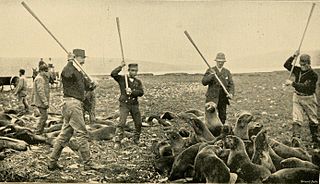 W
WSeal hunting, or sealing, is the personal or commercial hunting of seals. Seal hunting is currently practiced in ten countries: United States, Canada, Namibia, Denmark, Iceland, Norway, Russia, Finland and Sweden. Most of the world's seal hunting takes place in Canada and Greenland.
 W
WSheep shearing is the process by which the woollen fleece of a sheep is cut off. The person who removes the sheep's wool is called a shearer. Typically each adult sheep is shorn once each year. The annual shearing most often occurs in a shearing shed, a facility especially designed to process often hundreds and sometimes more than 3,000 sheep per day.
 W
WA toboggan is a simple sled traditionally used by children. It is also a traditional form of transport used by the Innu and Cree of northern Canada.
 W
WCanadian values are the commonly shared ethical and human values of Canadians. The major political parties have claimed explicitly that they uphold these values, but use generalities to specify them.
 W
WWestern lifestyle or cowboy culture is the lifestyle, or behaviorisms, of, and resulting from the influence of, the attitudes, ethics and history of the American Western cowboy and cowgirl. In the present day these influences affect this sector of the population's choice of recreation, clothing, and consumption of goods. Today, the Western lifestyle is considered a subculture and includes strong influences from Native American and Mexican American culture.
 W
WWiarton Willie is the name given to a Canadian groundhog who lives in the community of Wiarton in Bruce County, Ontario. Every February 2, on Groundhog Day, Willie takes part in the local Wiarton Willie Festival. His role is to predict whether there will be an early spring. Although the original Wiarton Willie died in 1999, the Wiarton Groundhog Day celebrations continue each year with a successor of the original Willie, and each successor is also referred to as Wiarton Willie.